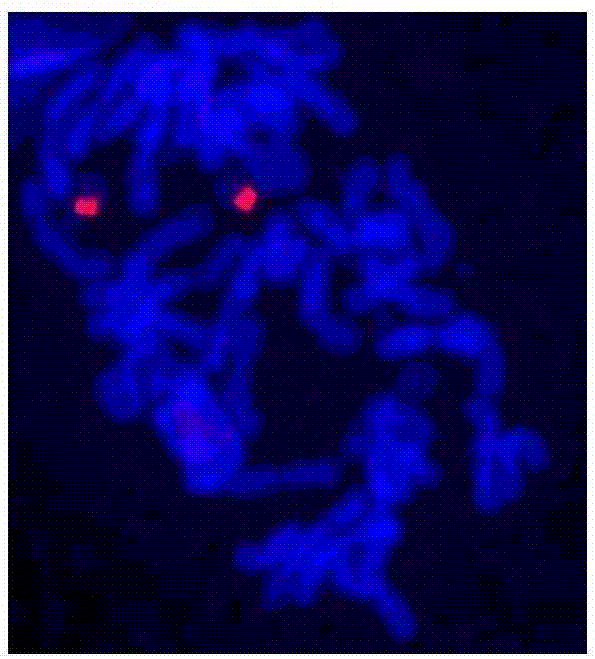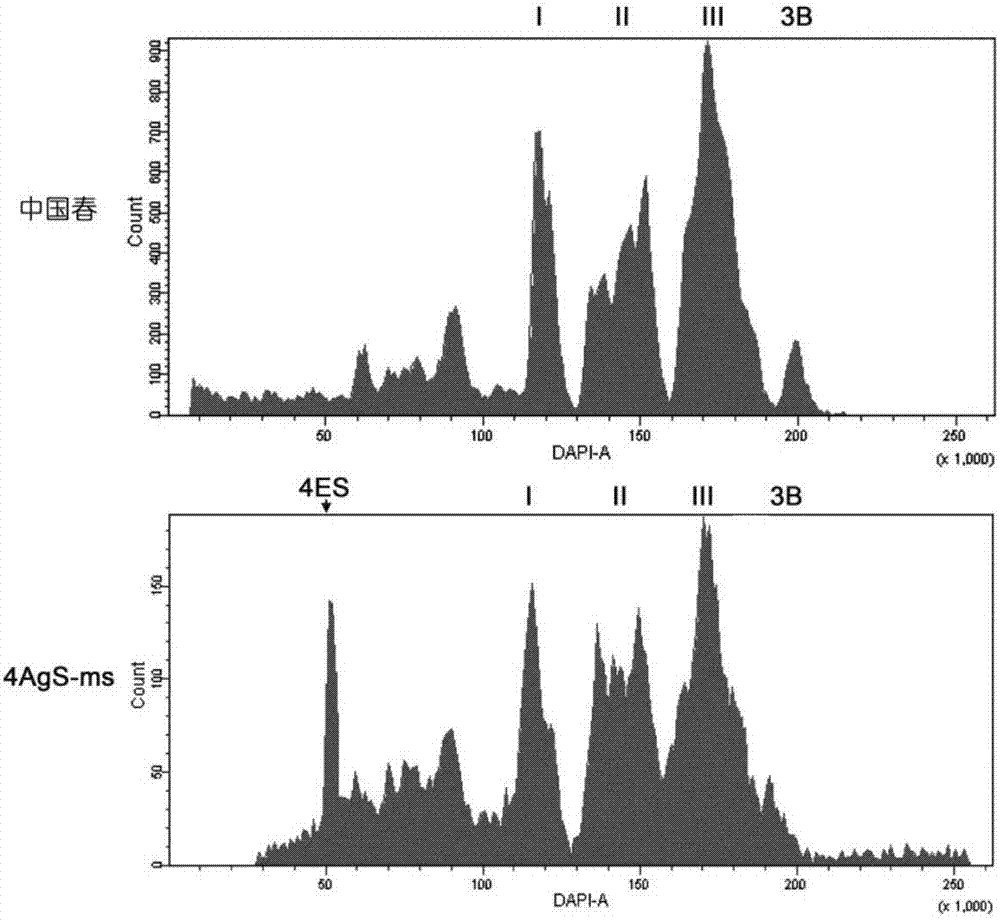Wheat fertility-restoring gene and application thereof
A fertility restoration gene and gene technology, applied in the field of plant biology, can solve the problems of narrow restoration sources, limited hybrid variety resources, and unstable fertility of sterile lines.
- Summary
- Abstract
- Description
- Claims
- Application Information
AI Technical Summary
Problems solved by technology
Method used
Image
Examples
Embodiment 1、4
[0086] Embodiment 1, Breeding of 4AgS-ms double-terminal variant addition lines
[0087] The Lanzhou nuclear male sterility mutant was found in the hybrid F4 population of the hybrid combination of spring wheat varieties. It was crossed with 9 wheat lines including China Spring, the F1 generation was self-crossed, and the segregation ratio of the sterile and fertile plants of the F2 generation was observed, which was in line with the ratio of 1:3, indicating that wheat Lanzhou nuclear male sterility mutation The body is a typical recessive mutation controlled by a single gene (Zhou Kuanji et al., 1996).
[0088] The blue-grain disomic addition line is a wheat strain with two additional 4Ag chromosomes of E. elongatus in the wheat genome. The reason for the blue grain color is that the additional 4Ag chromosomes contain the blue-grain gene Ba. The pollen of the blue-grained disomic addition line of wheat was given to the Lanzhou nuclear male sterile mutant, and the light blue-...
Embodiment 2
[0091] Embodiment 2, utilizing flow cytometry to separate 4Ag chromosome
[0092] The root tip cells were treated with cell cycle synchronization by double blocking method, and after formalin fixation, mechanical homogenization and DAPI staining, they were loaded into a flow cytometer.
[0093] First, flow cytometry karyotype analysis was performed to confirm the size of the chromosomes to be separated. The 4AgS-ms paired-end somatic addition line was used as the experimental group, and China Spring was used as the control. According to the size difference of wheat chromosomes, the karyotype map usually forms four independent peaks (Vrana et al., 2000): Peak I contains four chromosomes 1D, 4D, 6D and 7D; peak II contains 1A, 3A, 6A, There are 6 chromosomes in 2D, 3D and 5D; peak III includes 10 chromosomes in total 2A, 4A, 5A, 7A, 1B, 2B, 4B, 5B, 6B and 7B; 3B is the largest and forms a peak independently. Comparing the karyotype map of China Spring, it can be seen that in ad...
Embodiment 3、4
[0095] Example 3, High-throughput sequencing and sequence assembly of 4Ag chromosome
[0096] Chromosomes isolated by flow cytometry are highly condensed chromatin, which cannot be directly applied to high-throughput sequencing. DNA must be separated from chromosomes by proteinase K digestion. 2.2 million 4ES chromosomes were co-purified to obtain about 500ng DNA with good integrity.
[0097] Using 100ng of 4ES genome as a template, Qiagen REPL1-g Single Cell Kit was used for gene amplification, and a total of 30μg of amplification products were obtained. The amplified products were digested, cloned, and sequenced. Among the 31 clones, no Escherichia coli and human contamination were found. One clone could completely match the genome sequence of wheat. The remaining clones were probably derived from E. elongatum 4Ag. 97%.
[0098] Considering that the genomes of Triticum species have a high proportion of repetitive sequences and difficult splicing (the proportion of repetiti...
PUM
 Login to View More
Login to View More Abstract
Description
Claims
Application Information
 Login to View More
Login to View More - R&D
- Intellectual Property
- Life Sciences
- Materials
- Tech Scout
- Unparalleled Data Quality
- Higher Quality Content
- 60% Fewer Hallucinations
Browse by: Latest US Patents, China's latest patents, Technical Efficacy Thesaurus, Application Domain, Technology Topic, Popular Technical Reports.
© 2025 PatSnap. All rights reserved.Legal|Privacy policy|Modern Slavery Act Transparency Statement|Sitemap|About US| Contact US: help@patsnap.com



